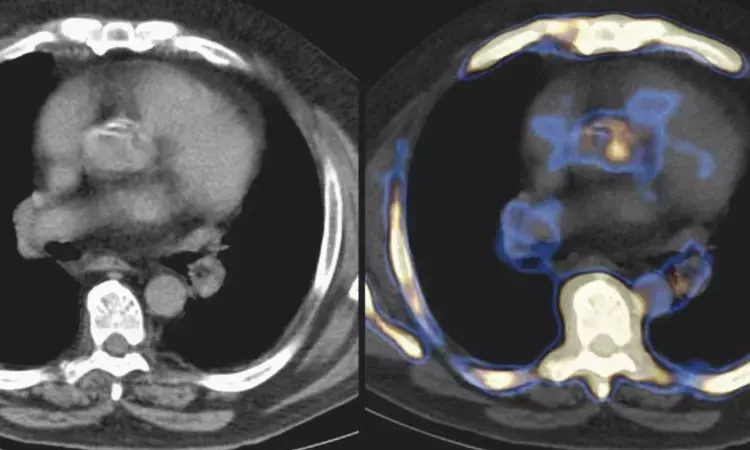- Home
- Medical news & Guidelines
- Anesthesiology
- Cardiology and CTVS
- Critical Care
- Dentistry
- Dermatology
- Diabetes and Endocrinology
- ENT
- Gastroenterology
- Medicine
- Nephrology
- Neurology
- Obstretics-Gynaecology
- Oncology
- Ophthalmology
- Orthopaedics
- Pediatrics-Neonatology
- Psychiatry
- Pulmonology
- Radiology
- Surgery
- Urology
- Laboratory Medicine
- Diet
- Nursing
- Paramedical
- Physiotherapy
- Health news
- Fact Check
- Bone Health Fact Check
- Brain Health Fact Check
- Cancer Related Fact Check
- Child Care Fact Check
- Dental and oral health fact check
- Diabetes and metabolic health fact check
- Diet and Nutrition Fact Check
- Eye and ENT Care Fact Check
- Fitness fact check
- Gut health fact check
- Heart health fact check
- Kidney health fact check
- Medical education fact check
- Men's health fact check
- Respiratory fact check
- Skin and hair care fact check
- Vaccine and Immunization fact check
- Women's health fact check
- AYUSH
- State News
- Andaman and Nicobar Islands
- Andhra Pradesh
- Arunachal Pradesh
- Assam
- Bihar
- Chandigarh
- Chattisgarh
- Dadra and Nagar Haveli
- Daman and Diu
- Delhi
- Goa
- Gujarat
- Haryana
- Himachal Pradesh
- Jammu & Kashmir
- Jharkhand
- Karnataka
- Kerala
- Ladakh
- Lakshadweep
- Madhya Pradesh
- Maharashtra
- Manipur
- Meghalaya
- Mizoram
- Nagaland
- Odisha
- Puducherry
- Punjab
- Rajasthan
- Sikkim
- Tamil Nadu
- Telangana
- Tripura
- Uttar Pradesh
- Uttrakhand
- West Bengal
- Medical Education
- Industry
Thoracic aortic 18F-sodium fluoride PET predicts future ischemic stroke in CVD

UK: Thoracic aortic 18F-sodium fluoride activity in patients with established cardiovascular disease (CVD) is associated with the progression of atherosclerosis and future ischemic stroke, states a recent study in the journal JACC: Cardiovascular Imaging.
The study revealed that THE assessment of thoracic 18F-sodium fluoride positron emission tomography (PET) identifies localized areas of atherosclerotic disease activity that are directly associated with disease progression and downstream regional clinical atherothrombotic events.
Aortic atherosclerosis is known to be an important contributor to the risk of ischemic stroke. Identification of patients with high-risk aortic atheroma could boost preventative treatment strategies for future ischemic stroke. Considering this, Alexander J. Fletcher, University of Edinburgh, Edinburgh, United Kingdom, and colleagues aimed to investigate whether thoracic 18F-sodium fluoride positron emission tomography could improve the identification of patients at the highest risk of ischemic stroke in a post hoc observational cohort study.
For this purpose, the researchers quantified thoracic aortic and coronary 18F-sodium fluoride activity in 461 patients with stable cardiovascular disease undergoing PET combined with computed tomography (CT). Change in aortic and coronary CT calcium volume was used to assess the progression of atherosclerosis. The occurrence of ischemic stroke and myocardial infarction determined the clinical outcomes. The prognostic utility of 18F-sodium fluoride activity for predicting stroke was compared to clinical risk scores and CT calcium quantification using survival analysis and multivariable Cox regression.
Based on the study, the researchers found the following:
- After 12.7 ± 2.7 months, progression of thoracic aortic calcium volume correlated with baseline thoracic aortic 18F-sodium fluoride activity (n = 140; r = 0.31).
- In 461 patients, 23 (5%) patients experienced an ischemic stroke and 32 (7%) a myocardial infarction after 6.1 ± 2.3 years of follow-up.
- High thoracic aortic 18F-sodium fluoride activity was strongly associated with ischemic stroke (HR: 10.3), but not myocardial infarction.
- High coronary 18F-sodium fluoride activity was associated with myocardial infarction (HR: 4.8) but not ischemic stroke.
- In a multivariable Cox regression model including imaging and clinical risk factors, thoracic aortic 18F-sodium fluoride activity was the only variable associated with ischemic stroke (HR: 8.19).
The researchers conclude, "thoracic aortic 18F-sodium fluoride activity is associated with the progression of atherosclerosis and future ischemic stroke in patients with CVD. However, the small number of stroke events means larger, adequately powered cohorts will be needed."
Reference
The study titled, "Thoracic Aortic 18F-Sodium Fluoride Activity and Ischemic Stroke in Patients With Established Cardiovascular Disease," was published in the journal JACC: Cardiovascular Imaging.
DOI: 10.1016/j.jcmg.2021.12.013
KEYWORDS: cardiovascular disease, PET, CT, ischemic stroke, Alexander J Fletcher, 18F-sodium fluoride activity, computed tomography, positron emission tomography, atherosclerotic disease, atherosclerosis
Dr Kamal Kant Kohli-MBBS, DTCD- a chest specialist with more than 30 years of practice and a flair for writing clinical articles, Dr Kamal Kant Kohli joined Medical Dialogues as a Chief Editor of Medical News. Besides writing articles, as an editor, he proofreads and verifies all the medical content published on Medical Dialogues including those coming from journals, studies,medical conferences,guidelines etc. Email: drkohli@medicaldialogues.in. Contact no. 011-43720751


